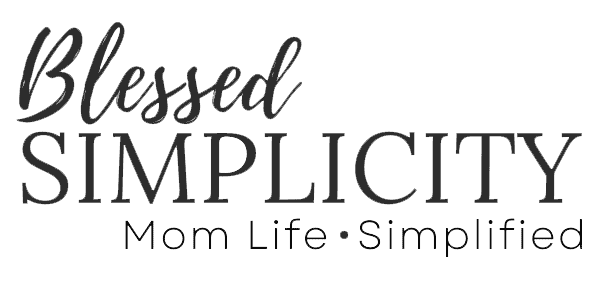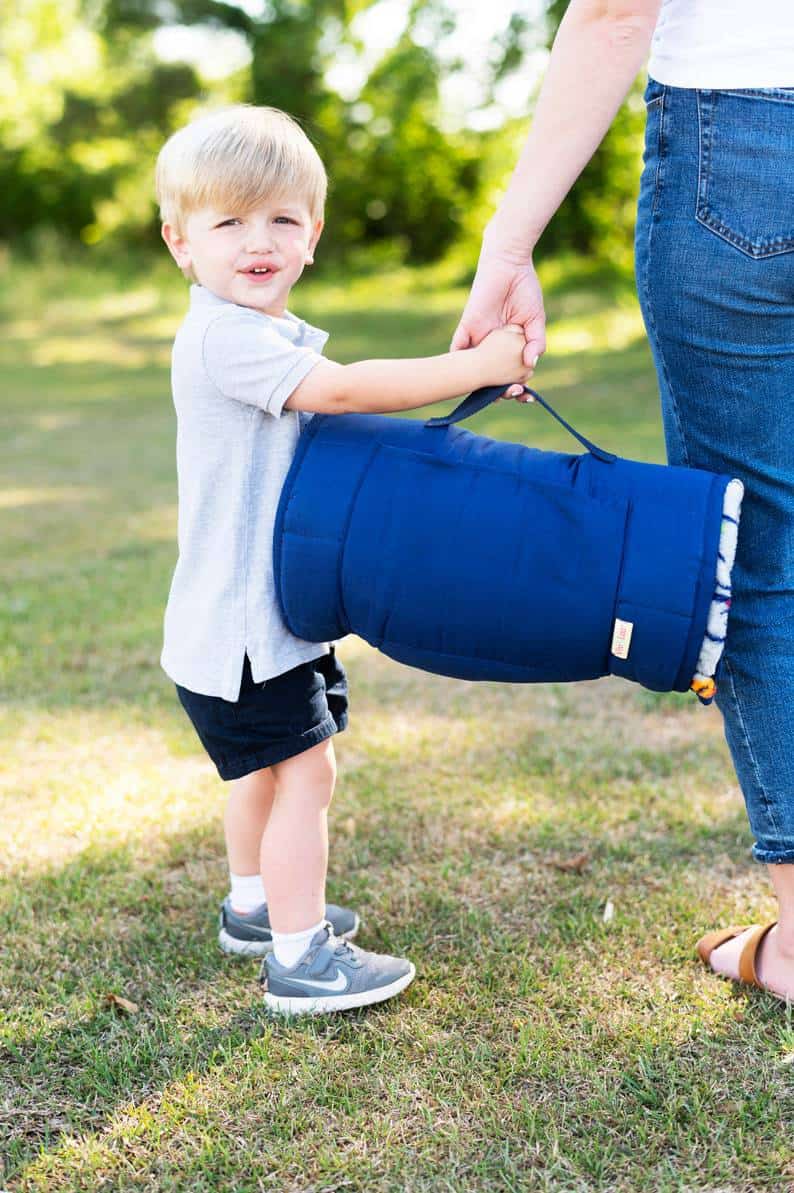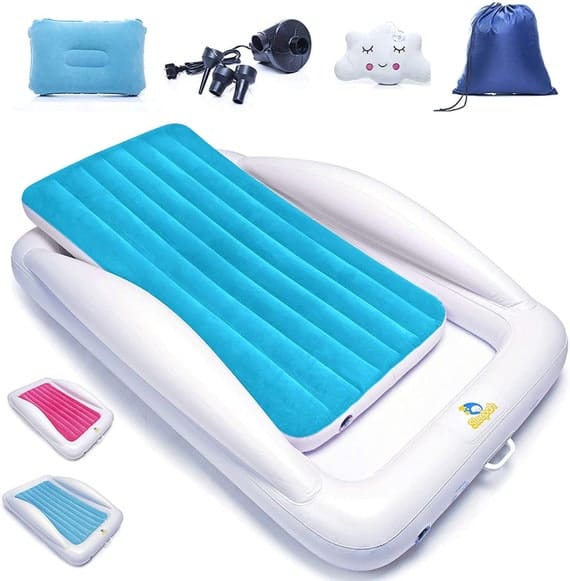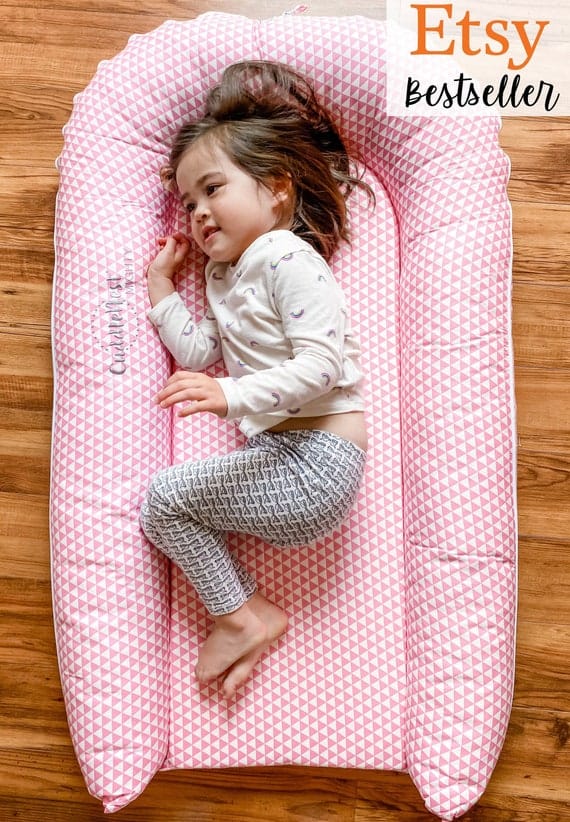Bed Sharing Safety Checklist
When it comes to bed sharing with your little one, safety is always the top priority. Here’s a handy bed sharing safety checklist of things to keep in mind to help ensure a safe sleep environment for both you and your child until they move into a toddler bed.
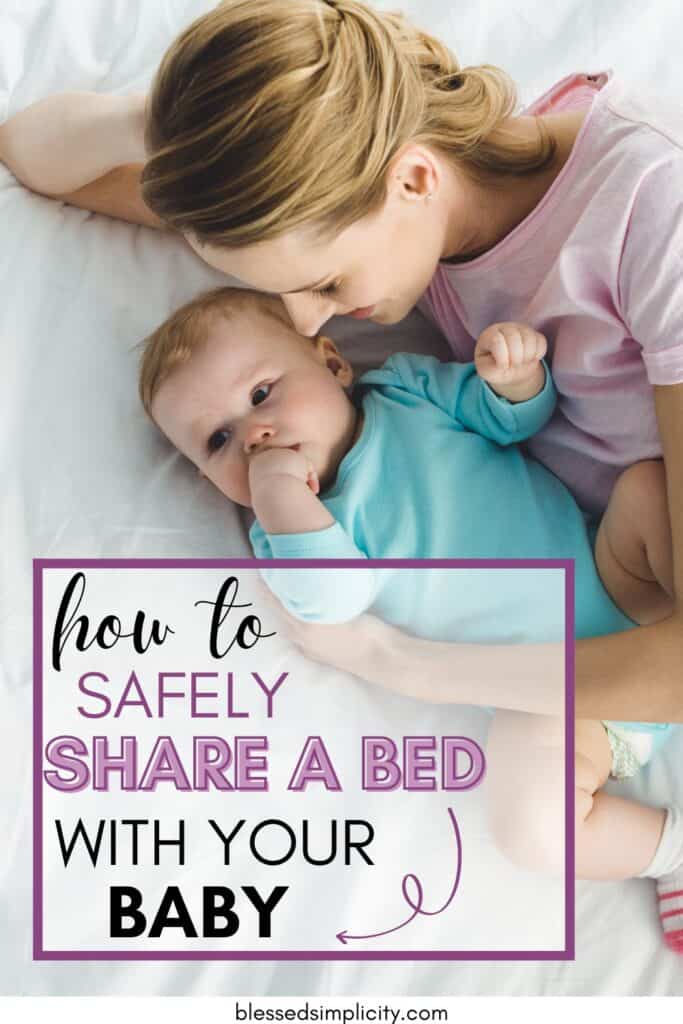
*This post contains affiliate links. Please see full disclosure policy below.
Bed Sharing Safety Checklist
Shared sleeping, or bed sharing, is when parents sleep in the same bed as their infant or toddler. Some families choose to do this arrangement for convenience or preference, while others do it for cultural reasons. If you’re thinking of sharing a bed with your baby, there are some important safety considerations to keep in mind.
Healthy Full Term Baby
Bed sharing safety begins with a healthy full term baby. Premature babies, medically complex babies, and babies with chronic health issues have a higher risk of SIDS and possibly of suffocation. They may be challenged by the same conditions that are desirable for full-term, healthy babies.
Mattress Firmness and Type
A firm mattress is essential for any shared sleeping arrangement. A baby’s mattress should be firm enough that they can’t sink into it and suffocate. The type of mattress is also important; an innerspring mattress is best, followed by a foam mattress. A waterbed is not recommended as it’s too soft and can cause the baby to roll into a dangerous position.
Sleeping Position
Sleeping on your back is the safest position for both you and your baby when bed sharing. It allows you to see your baby at all times and prevents you from rolling over on top of them during the night. If you are not used to sleeping on your back, try practicing during naps so that you’re more comfortable doing so at night.
Child Placement for Bed Sharing
Place your child next to you in the bed, not on top of you. The best way to do this is by placing your baby on their back on a firm surface next to your pillow, with their head pointing up towards the top of the bed. You want to make sure that there’s nothing within reach of your baby that they could pull down over their head, such as pillows, blankets, or top sheets.
Loose Fitting Pajamas
Wearing loose fitting pajamas made out of breathable fabric (such as cotton) will help you, and your baby stay cool and comfortable during the night. Avoid wearing synthetic fabrics or anything constricting, as this can increase the risk of overheating.
No Smoking when Bed Sharing
Exposure to smoking is by far the biggest risk factor for SIDS. Even if you or your partner only smoke outside your home, second hand smoke, and smoke exposure from skin and clothing could also effect your baby. Bed sharing is not recommended if you are a smoker.
Sober Parents
If you are bed sharing with a child, especially an infant, it is important that you are not drinking alcohol before bed and are taking no medications that can make you drowsy.
Bed Sharing vs. Co-Sleeping
Bed sharing simply means that parents sleep in the same bed as their infant, while co-sleeping refers to any arrangement where the baby sleeps in close proximity to the parents, whether that’s in the same bed, a bassinet next to the bed, or even a crib in the parents’ bedroom.
There are pros and cons to both arrangements, but ultimately it’s up to the parents to decide what works best for them and their family. If you do choose to bed share, it is important to follow the safety guidelines listed above.
Pros of Bed Sharing
Let’s start with the pros of bed sharing. First of all, it can help promote bonding between parent and child. It can also make nighttime feedings and comforting easier. Additionally, studies have shown that babies who share a bed with their parents are less likely to suffer from SIDS (sudden infant death syndrome).
Cons of Bed Sharing
Now let’s talk about the cons of bed sharing. First of all, it can be dangerous if the adults in the bed are smokers or if they are under the influence of drugs or alcohol. Additionally, bed sharing can increase the risk of SIDS if the parents are obese or if the baby is born premature or underweight. Finally, bed sharing can make it more difficult for parents to get a good night’s sleep because they have to worry about rolling over on their baby or accidentally smothering them.
Can you bed share with a foster child?
Many parents wonder if they can share a bed with a foster child. First, you should always check with your state foster care bedroom requirements, and then speak to your case worker if you plan to let an infant share your bed.
Most states will allow a child under the age of two share a room with foster parents, but the child must have his or her own bed, even if it is a small toddler bed in the parents room. There are special considerations that can be made for bed sharing, especially if the foster mom is nursing a foster baby.
Shared sleeping can be a wonderful bonding experience for parents and infants alike, especially if you are trying to bond with an adopted baby —but it’s important to do so safely. By following these guidelines and using common sense, you can ensure that everyone gets a good night’s sleep—and avoid any accidents.
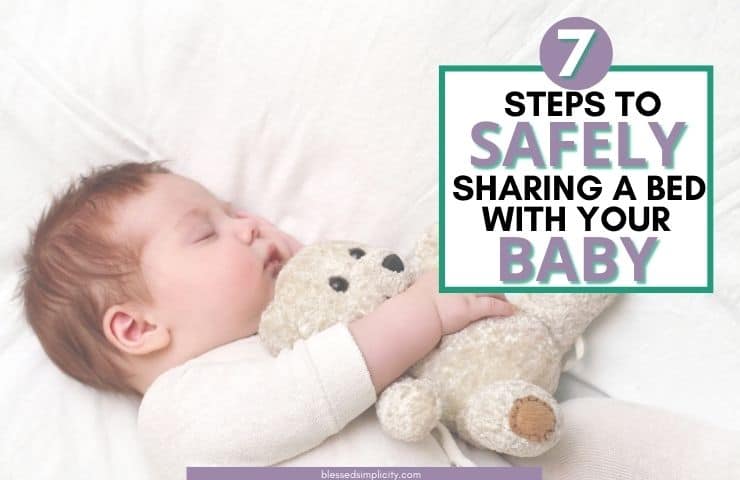
If you’re considering whether or not to share a bed with your baby, there’s no easy answer. You’ll need to weigh the pros and cons carefully and decide what’s best for you and your family. However, if you do choose to share a bed with your baby, there are some safety precautions you should take in order to reduce the risk of SIDS or other accidents. Make sure both you and your partner are nonsmokers and sober, and never co-sleep on a soft surface like a waterbed, couch, or armchair. Additionally, keep pillows, blankets, and stuffed animals out of the baby’s sleeping area so there’s no risk of them being smothered. Following these simple safety tips will help ensure that everyone gets a good night’s sleep—with as little worry as possible.
More Infant and Toddler Parenting Posts
- How to Homeschool with a Toddler
- Best Toddler Beds for Small Spaces
- Best Travel Toddler Beds
- Gifts for Toddler Girls via Everyday Savvy

